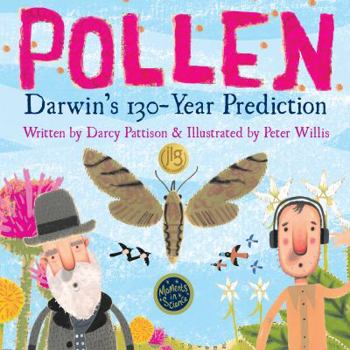Pollen: Darwin's 130 Year Prediction
Select Format
Select Condition 
Book Overview
How long does it take for science to find an answer to a problem? On January 25, 1862, naturalist Charles Darwin received a box of orchids. One flower, the Madagascar star orchid, fascinated him. It had an 11.5" nectary, the place where flowers make nectar, the sweet liquid that insects and birds eat. How, he wondered, did insects pollinate the orchid? After experiments, he made a prediction. There must be a giant moth with a 11.5"...
Format:Paperback
Language:English
ISBN:1629441201
ISBN13:9781629441207
Release Date:April 2019
Publisher:Mims House
Length:34 Pages
Weight:0.30 lbs.
Dimensions:0.1" x 8.5" x 8.5"
Age Range:6 to 9 years
Grade Range:Grades 1 to 4
Customer Reviews
0 rating





